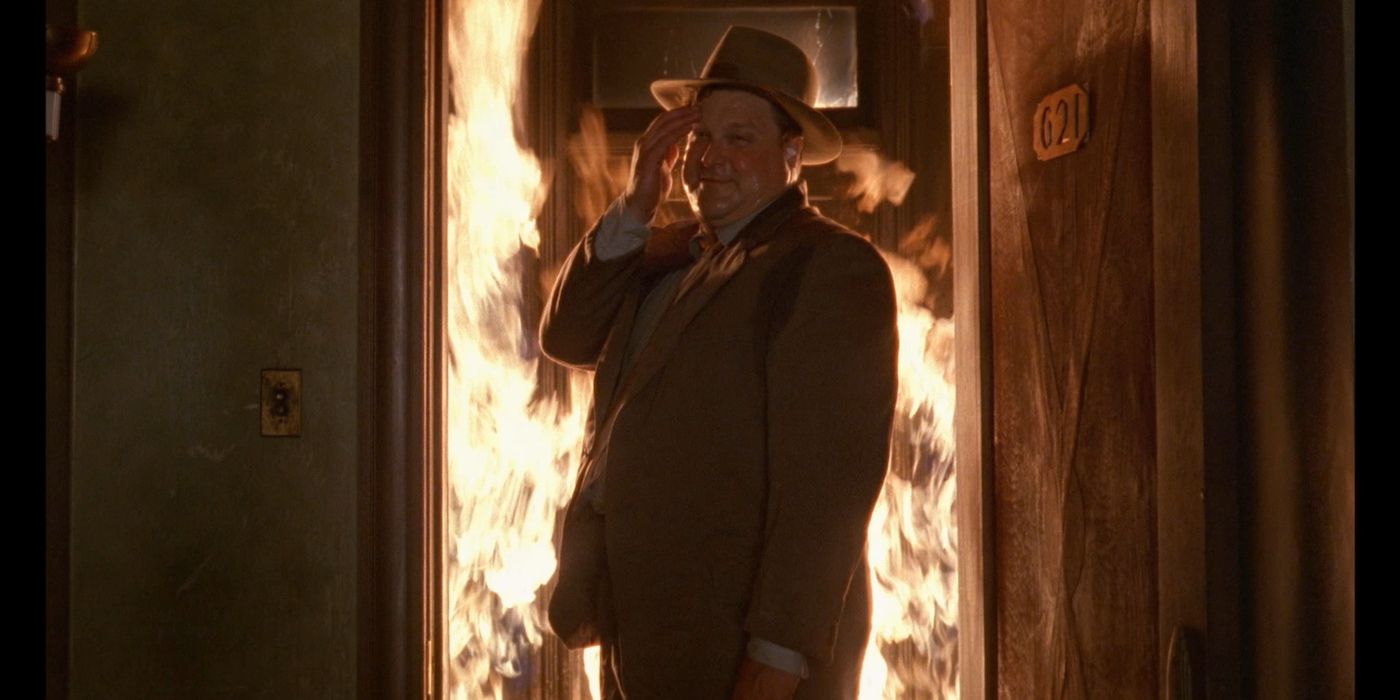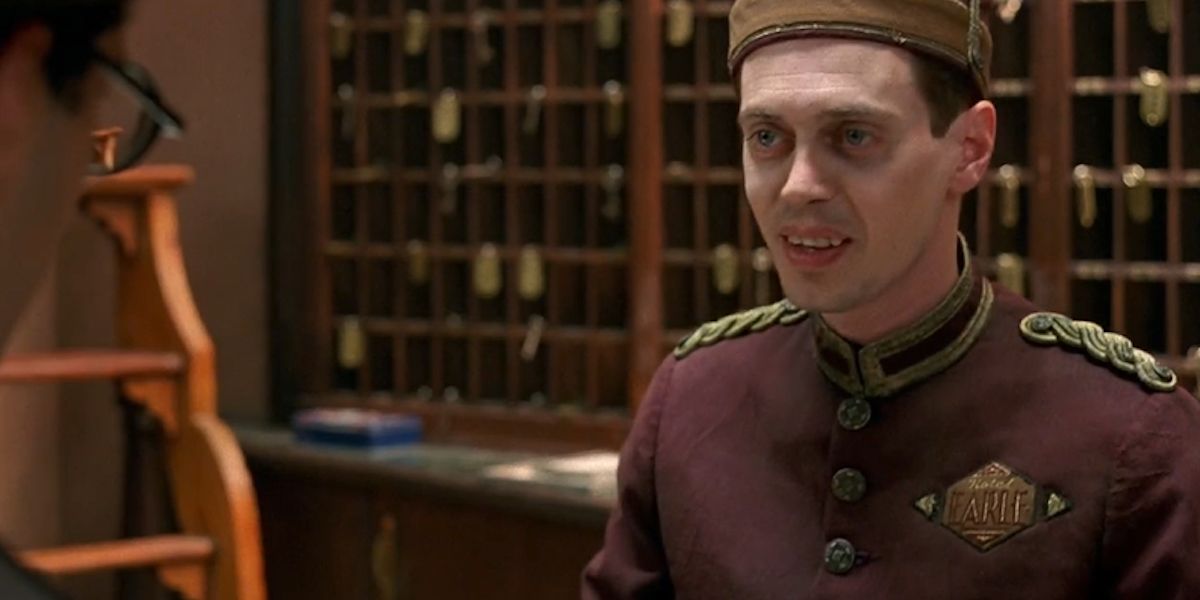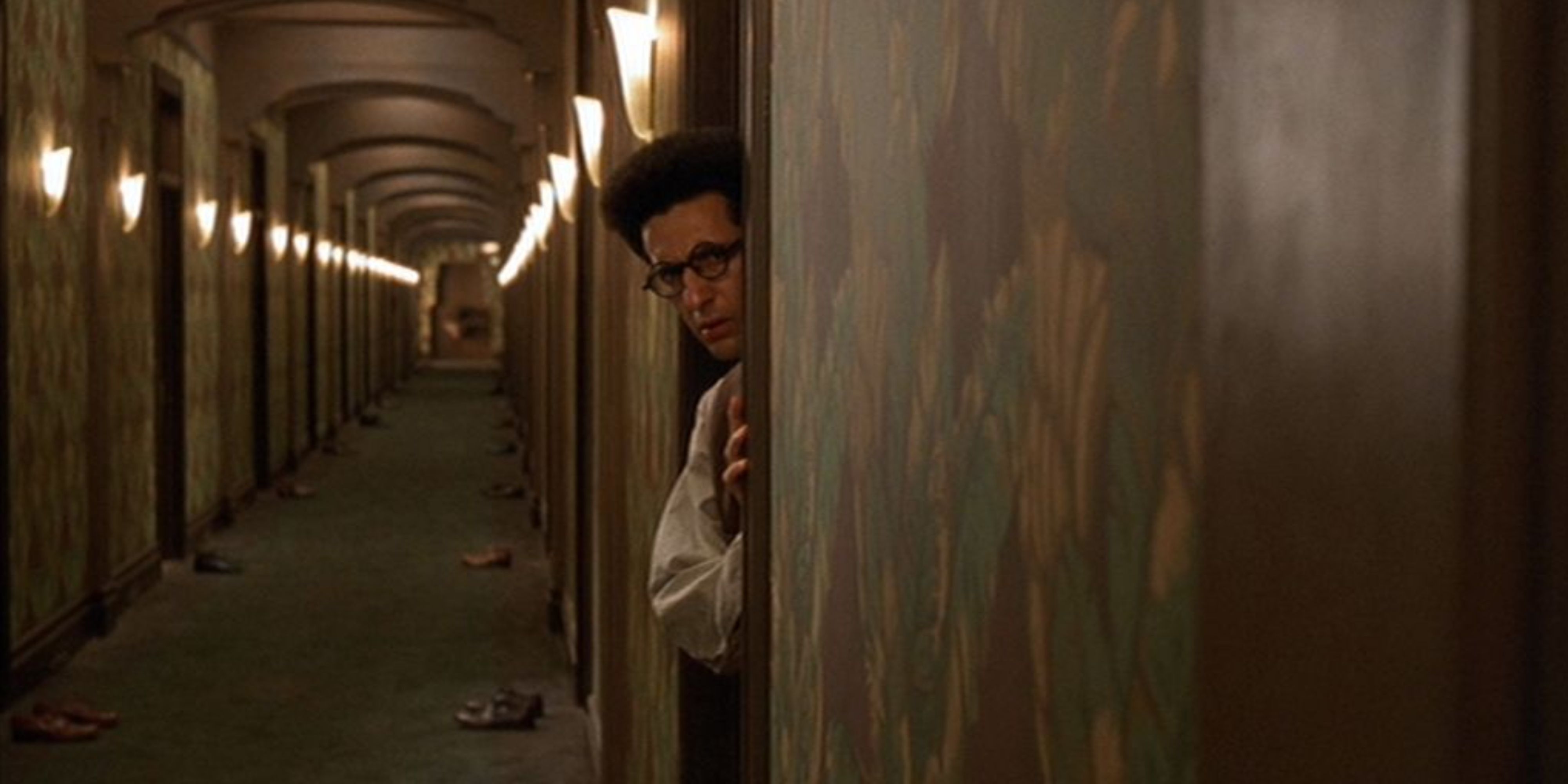Ever since it first came out in 1991, much has been said about Joel and Ethan Coen’s Barton Fink. More specifically, there has been a lot of debate surrounding which genre this all-encompassing, anxiety-inducing work of art belongs to. Is it a drama? A comedy? A psychological thriller? Or, perhaps, a horror movie based not on build-up and release, but on constant escalation? Indeed, it is hard to put a pin on something so complex as Barton Fink. However, no matter where you stand on the whole genre debate, there’s no denying that the movie is easily one of the most disturbing in the Coens’ filmography - and considering that the Coens are the guys behind No Country for Old Men, that is saying something. And while there are many scenes of Barton Fink that carefully toe the line that separates the merely weird from the properly scary — the peeling wallpaper, Audrey’s (Judy Davis) sudden death — none is as terrifying as that one hallway scene.
What Is ‘Barton Fink’ About?
One of the earliest additions to the Coen Brothers’ extensive body of work, Barton Fink is a film that can be described as taking place inside the mind of a single man. The question is: whose mind is it? In one corner, we have the titular Barton Fink, played by a somewhat adorkable John Turturro. A playwright from 1940s New York, Barton is invited to write for the movies after his first play, a Death of a Salesman-like take on the American dream and the troubles of the working class, becomes a critical and box-office hit on Broadway. Motivated by the promise of making a quick buck, Barton moves to Los Angeles and takes up a room at the Earle, a run-down hotel that he hopes will keep him close to the Average Joes that he uses as subjects for his plays.
In the other corner, we have Charlie Meadows (John Goodman), a self-proclaimed insurance salesman that lives next door to Barton at the Earle. Friendly, cheerful, and an Average Joe through and through, Charlie quickly takes to Barton after the two have a minor disagreement about excessive noise. Day after day, he pops up by Mr. Fink’s door to listen to his endless ramblings about the hardships of being a writer. Does it bother him that Mr. Fink doesn’t listen to anything he has to say, no matter how much he claims to be interested in the plights of the common man? Yes, it definitely does. But that sure won’t stop him from being a friend.
And if there’s something Barton needs in LA, that is a friend. As it turns out, writing for the pictures isn’t as simple as he had expected. His screenplay for a wrestling B-movie starring Wallace Beery isn’t going anywhere, and Barton gets little to no help from the studio execs breathing down his neck. His efforts to pick the brain of novelist-turned-screenwriter W. P. Mayhew (John Mahoney) prove futile as his idol reveals himself to be nothing more than a drunken fraud. The only person that offers him a helping hand is Mayhew’s assistant/mistress, Audrey. Sadly, her assistance never amounts to anything as Barton wakes up to find her dead body beside him after they spend the night together at the Earle.
Fortunately, Charlie is there to help a friend out just before his trip to New York. Unfortunately, Charlie might not be exactly who he claims to be. As two policemen appear at the Earle to investigate the whereabouts of one Karl Mundt, a body-dismembering serial killer with a striking resemblance to a certain insurance salesman, something clicks inside Barton’s head. The Wallace Beery screenplay begins to flow, but so do Barton’s concerns about what truly happened to Audrey and what exactly is in the package that Charlie left in his care. The only upside is that the conditions of the Earle seem to have gotten a little better: the heat has become more bearable, the mosquitoes are gone, and the glue holding the wallpaper in place no longer drips, exposing the flesh-like walls of the hotel’s room.
Barton Realizes He Has Entered the Belly of the Beast
The entirety of Barton Fink is a build-up of tension that finally culminates in the movie’s most memorable moment: the hallway scene, in which Charlie, now in full Karl Mundt form, storms through the sixth floor of the Earle as the hotel erupts into flames. Shotgun in hand, he charges the two policemen while repeatedly screaming “I’ll show you the life of the mind!” He kills them both, one of them after uttering a dubious “Heil, Hitler” - either a reference to the cops’ blatant antisemitism or to Mundt’s own Nazi sympathies. Then, he turns to Barton, handcuffed to his bed by the two detectives who believe him to be at least an accomplice in Audrey's murder. Karl scolds Fink for his inability to listen and his tourist-like approach to the world of the working class. He teases Barton about having dropped by to “visit” his parents and his Uncle Maury in New York, and finalizes his speech by declaring that the contents of the mysterious package he left behind aren’t his: they are all Barton’s. For a second, it looks as though Karl is going to murder Barton, but all he does is free him from his constraints. As Barton leaves the Earle for good, he turns around to catch a glimpse of his former friend Charlie entering his own room, perfectly at home inside the flaming hotel.
All elements conspire to make this scene which is little more than 5 minutes long a terrifying piece of cinema. The hallway of the Earle’s sixth floor has always been an ominous entity, with its nauseating brown-and-green walls and its emptiness suggesting the presence of guests that are never there. The fire seems more like an afterthought in a place that was already hellish from its inception. And, yet, the focus on the sweat on the policemen’s faces as they await Mundt's arrival, accompanied by the sinister monotone of the music, leaves no doubt about the horror that is to come. John Goodman’s performance is also to be commended. The ease with which he travels from pure rage to sorrow to resignation is truly the mark of a great actor. Finally, there’s the disturbing image of Mundt entering his room and the mystery of what he is. Is he a manifestation of evil? A manifestation of Barton’s fears and desires? A representation of the war that is to come? Just a regular cruel man? Perhaps he’s all of these things, all wrapped into one.
However, what truly makes the hallway scene in Barton Fink so terrifying is not just its imagery, but what it represents in the grand scheme of the plot. Both in his moving to Hollywood and in his forays into the world of the Average Joe, Barton enters the belly of a beast without fully comprehending what it means. He strolls through these complex scenarios as a tourist, pretending to understand the world around him and to be better than everyone else, fully aware that he will leave it all behind one day. Well, not anymore. When Barton chose to stay at the Earle to be closer to his working-class heroes, he chose to live in the mind of the Karl Mundts of the world, driven insane by the indignities of everyday life. He chose the unbearable heat, the constant noise, the constant drippings of an ear infection and wallpaper glue. Mundt, in turn, refuses to let Barton inhabit his world without submitting him to the same horrors that he goes through. He refuses to allow Barton to be a tourist. And by the time the hallway scene wraps up, it becomes clear that Mundt has won: Barton will be forever trapped in this nightmare, even if he leaves the Earle and never sees Charlie again.
In the final scene of Barton Fink, the movie’s now downtrodden protagonist stares at the beach after his disastrous final meeting with studio exec Jack Lipnick (Michael Lerner). His screenplay, a mere rehashing of his Broadway play, has been turned down. And, yet, he can’t leave Hollywood behind: his contract with Capitol Pictures gives the studio control over everything he writes, and Lipnick has made it quite clear that nothing he writes will ever be produced. He’s finally trapped in the same world as the people he writes about, no longer a bourgeois artist, but an employee under the man’s boot. As he meditates on his situation, a woman sits down on the sand in front of him. Her image is a perfect replica of the portrait he had in his room at the Earle, the only good thing in such a hellish place. As the credits roll, we are left waiting for Barton to build his own version of the Earle around that image, for his mind to become just as twisted as Mundt’s.


.jpg)

